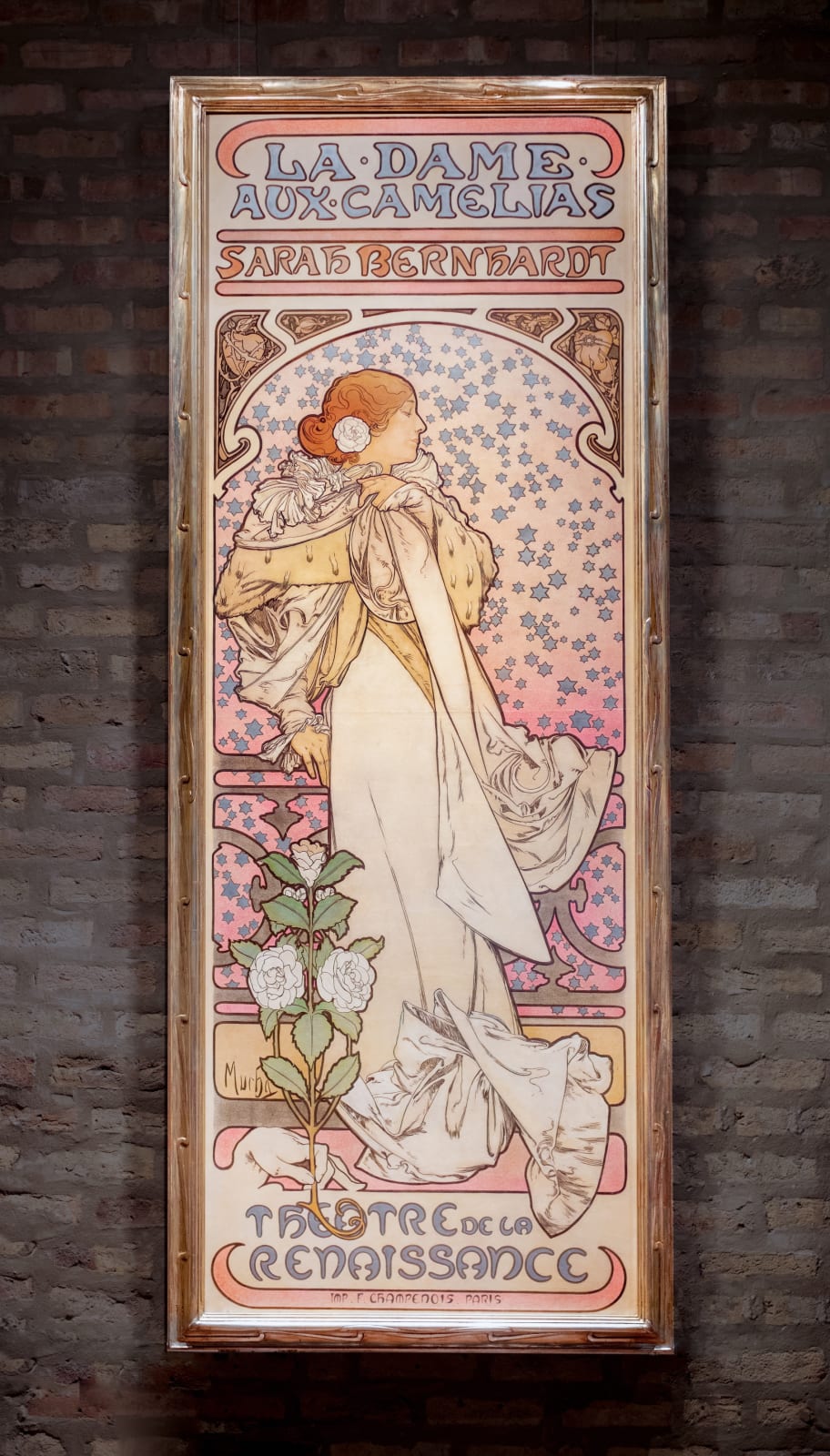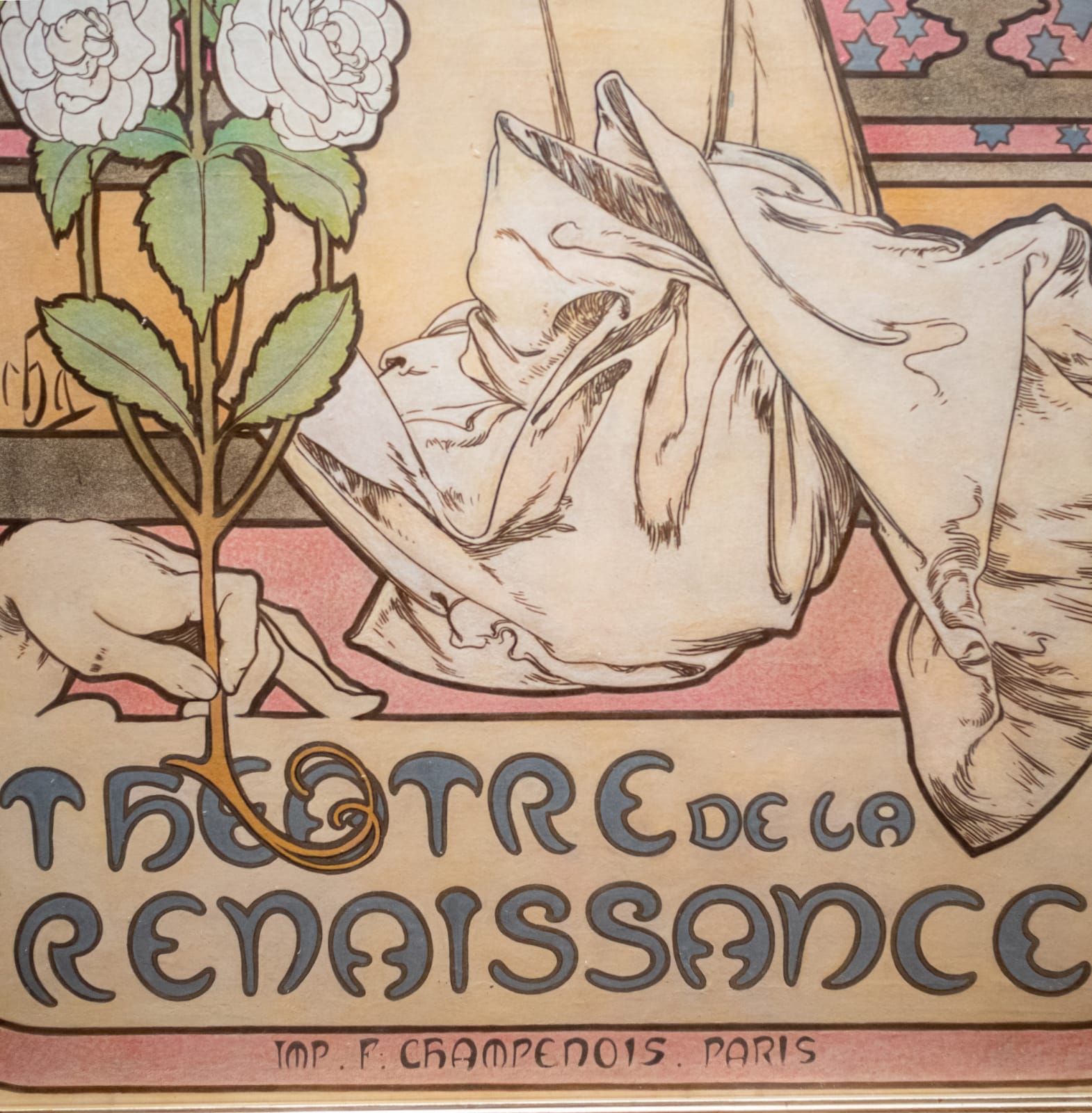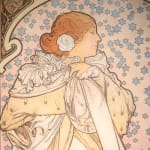Alphonse Mucha Czech, 1860-1939
1896
Further images
“Alexander Dumas Jr.’s drama [La Dame aux Camélias] had been very popular since its premier in 1852. Sarah Bernhardt considered it to be the key drama in her repertoire. This is perhaps Mucha’s most beautiful poster. The story of the tragic love of the great courtesan is portrayed in the poster with shocking impact. The figure of the heroine in a white robe leans against a balustrade with a background of silver stars. Her rich swept-back hair is adorned with her favorite flower, the camellia. This heraldic flower is repeated at the bottom of the poster, held by a mysterious hand... The tragedy is also symbolized by the hearts twined by thorny branches in the corners above the figure’s head... Mucha’s ability to characterize the substance of the play for which he created this poster, as well as his ability to express the most beautiful features of Sarah’s personality, was brought to perfection in this poster” (Mucha/Art Nouveau, p. 146).
Alphonse Mucha was a painter and decorative artist best known for the sensual Art Nouveau paintings, posters, and advertisements that came to define Art Nouveau in fin de siècle Paris. In 1887, after periods of employment in Vienna and Moravia, and studies in Munich and Paris, Mucha began to support himself producing magazine and advertising illustrations. Eventually he gained fame by creating a poster for a play featuring Sarah Bernhardt, in the role of Gismonda. It was the first of many of his depictions of voluptuous women seductively posed and draped in sheer, clinging gowns. They are generally set off by sinuous hair, turgid vines, and bountiful flowers, all distinctly outlined in the manner of Japanese woodcuts. The coiled eroticism of Mucha’s compositions created a lush and sensuous beauty that was admired and imitated by both collectors and artists alike.













